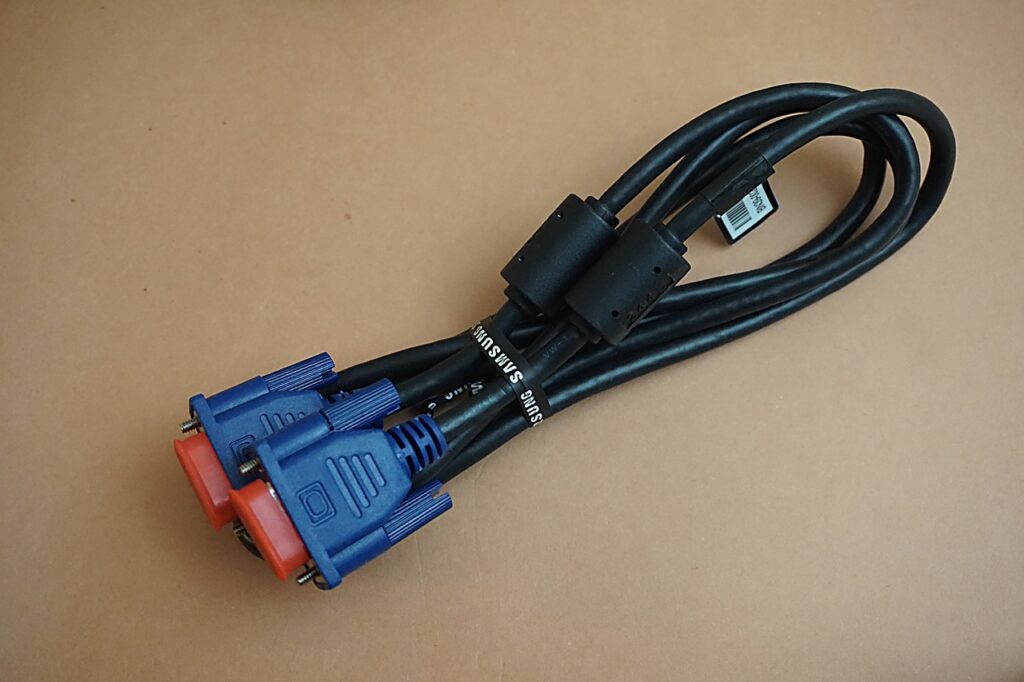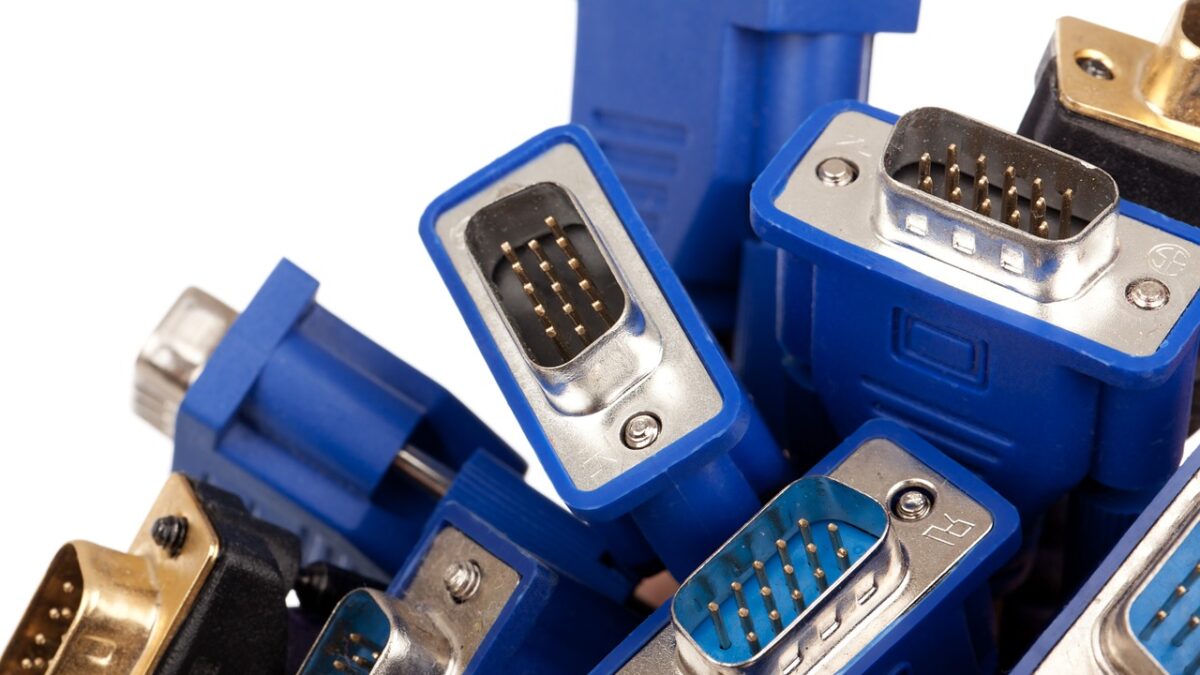Table of Contents
ToggleWhat is a VGA Cable?
VGA stands for Video Graphics Array. This VGA cable is a device used to transmit video signals. It does this as a connection between the computer and the monitor or between the computer and the television screen. The video graphics cable is available in two versions: male and female. This is made of high-quality materials and comes with an unconditional guarantee. Mainly it is a three-row 15-pin electronic connector.
Definition of VGA Cable
VGA has the function of processing graphic data and then displaying it on the monitor screen. In VGA there is also a processor called GPU (Graphics Processing Unit), and of course, it also requires memory.
VGA is an analog computer display standard that IBM first introduced to the market in 1987.VGA is the latest graphics standard followed by most computer graphics card manufacturers. Not surprisingly, the display windows still use VGA mode, which is supported by many monitor and graphics card manufacturers.
Graphics cards use to translate the output of a computer that later appears to monitor. If you’re a graphic designer, you likely need a high quality, high capacity graphics card. So also for those who like to play, especially difficult games like GTA, PES, and others. Of course, you also need a high quality, high capacity graphics card. Currently recognized manufacturers of graphics cards Nvidia and ATI among others.
Also, VGA can refer to the 15-pin VGA connector that is still widely use for sending analog video signals to the monitor.
Also Read: What is DBMS? Definition, Characteristics and Key Functions
HDMI to VGA Cable
Here is a cable adapter that you can use to connect devices with an HDMI port like desktop computers, laptops, DVDs, etc. to other devices with a VGA port such as a monitor, HDTV, or projector. The adapter has an enhanced certified AG6200 IC chip that conducts digital HDMI waves to VGA. It should note that it is not a bidirectional cable and therefore cannot be used to convert digital signals from VGA to HDMI format. The cable supports formats up to 1920 x 1080 60 Hz (1080p Full HD), including 720p, 1600 x 1200, and 1280 x 1024 for high resolution monitors. With this cable, you can connect a compatible PlayStation to your large TV and enjoy a good gaming and viewing experience. The ultra-light design allows you to carry it in a bag without being bulky.
VGA to HDMI Cable
There are two main differences between the VGA and HDMI interfaces. The first is that VGA is an analog interface. HDMI is digital. The second variance is that VGA is a video interface and HDMI contains both audio and video. If you connect a device with a VGA interface to a device with an HDMI interface, you, therefore, need not only a cable but also an adapter.
In general, devices with a VGA interface have a lower video resolution compared to modern HDMI devices. On computers with a VGA interface, the shorter video resolution is due to the limitations of the graphics card. Older displays with a VGA interface generally have a problem with screen resolution limitations.
What is a VGA out?

A Video Graphics Array (VGA) connector designed for use with many types of devices that have graphics cards. Some smaller technologies sometimes had a “mini” VGA as well.
VGA connectors contain an analog component and have multiple pins in their sockets to transfer data from one device to another. It was also easy to damage the pens, and overloads could damage your computer hardware.
The VGA ports weren’t transmitting audio either, so it had to come from your computer or external speakers. This can be frustrating for all types of media where audio is essential. As displays have evolved, new connectors have developed that contain audio and offer better picture quality. This led to more advanced connectors like DVI and HDMI.
Also Read: What is the RARP (Reverse Address Resolution Protocol)?
DVI to VGA
The VGA connectors will phase out, but you can still find them on some projectors, as well as older monitors and televisions. The main problem with a VGA connection is the fact that most of today’s display device uses a digital interface. Unfortunately, once a VGA signal converts from analog to digital, the video quality is lower than that of DVI.
Also, VGA offers a maximum resolution of 640 x 480 with a 60 Hz refresh rate, while a DVI connection explains up to 1920 x 1200 pixels for the single link format or a resolution of 2560 x 1600 for the format. With other available connections like DVI and HDMI, VGA is a nearly obsolete technology due to its limitations.
What is the difference between DVI and VGA?
The fundamental differences between them come from their age. DVI is a much newer type of connection that carries digital signals, while VGA is older and carries analog signals. However, DVI and VGA are much more than a jumble of letters. These are certain types of connections that can have a big impact on the quality of your image. Read on for a detailed description of what they are and how they work.
First, we will look at VGA to find out how this technology became popular and why other modern connections are replacing it.
VGA cord
The VGA cord (graphics card) itself acts as a translator or digital signal converter from a computer graphics display to the monitor screen. It is also useful to view the output on the computer monitor—a VGA card requires for activities like drawing a graphic design or playing games.
Also Read: What is WWAN (Wireless Wide Area Network)? Definition and differentiated technologies?
VGA card types
The ISA VGA card is a type of VGA card that fits into expansion slots. The ISA bus system (Industry Standard Architecture) still consists of 8-bit or 16-bit I/O.
The EISA VGA card is a type of VGA card that installed in an expansion slot.
The PCI-VGA card is a type of VGA card that installed in an expansion slot. The PCI (Peripheral Component Interconnect) bus is a 32-bit or 64-bit I/O system.
The AGP VGA card is a type of VGA card that plugs into the expansion slot. The AGP (Accelerated Graphics Port) bus is a 128-bit or 256-bit system I/O.
VGA card PCI Express (PCIe) is a type of VGA card that inserted into the expansion slot. The PCIe bus (Peripheral Component Interconnect Express) is a serial chain system with an I/O transfer rate of up to 32 GB /.
VGA cards already use the Graphic Array chipset, the latest chipset that already has a three-dimensional (3D) acceleration function in the chipset. In addition to the VGA card, so-called 3D accelerator computer peripheral devices now also supported, the role of which is a 3D accelerator to process or translate the 3D image data more perfectly and optimally.
Shashi Teja
Related posts
Hot Topics
Does Online Math Tutoring Work? What the Research and Real Results Show
The shift toward online learning has accelerated rapidly, especially in the last few years, prompting many parents and educators to…
What Is Krea AI & Why’s Everyone Suddenly Talking About It?
You’ve probably seen the buzz—Krea AI popping up all over your feed. Or maybe a friend casually dropped, “You have…



